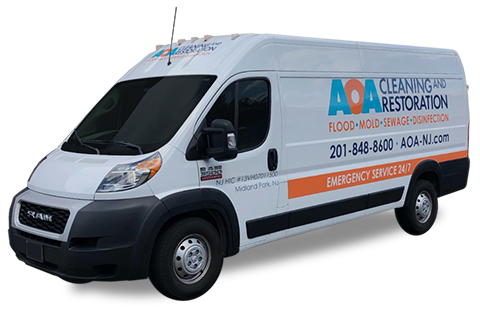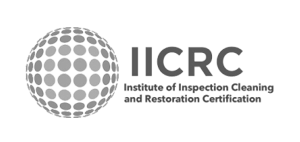Water damage can wreak havoc on your home and pose risks to your health if not addressed properly. When faced with water damage, it’s crucial to know what mistakes to avoid during the cleanup process. By safeguarding your home and ensuring an efficient recovery, you can minimize the damage and prevent further complications.
In this section, we will provide expert advice on the crucial steps to take and the common mistakes to avoid when it comes to water damage cleanup. You’ll learn how to protect your home, prioritize your safety, and ensure a successful restoration. By following these guidelines, you can navigate through the cleanup process with confidence and achieve the best possible outcome.
Before we delve into the specific mistakes to avoid, let’s highlight the key takeaways of this section:
Key Takeaways:
- Water damage cleanup is essential to safeguard your home and health.
- Knowing the common mistakes to avoid can help facilitate an efficient recovery process.
- Prioritize turning off the water source immediately to prevent further damage.
- Don’t delay the cleanup process as time is of the essence.
- Avoid using electrical appliances in wet areas to prevent hazards.
Now, let’s explore the mistakes to avoid in more detail to ensure a successful water damage cleanup process.
Turn Off the Water Source Immediately
The first step in preventing further water damage is to turn off the water source as soon as you notice any water intrusion. By taking this immediate action, you can minimize the extent of the damage and protect your home from further harm.
Whether it’s a burst pipe, a leaking faucet, or a malfunctioning appliance, locating the main water valve and shutting it off should be your top priority. This step will effectively stop the flow of water and prevent it from causing more destruction.
Turning off the water source is essential because it halts the continued entry of water into your home. This means that any existing water damage won’t worsen, allowing you to focus on cleanup and restoration without the risk of additional water-related issues.
Remember, reacting promptly and decisively to water damage can make all the difference in the extent of the damage and the overall recovery process. By turning off the water source immediately, you will take a significant step towards minimizing the impact of water damage on your property.
Why is it important to turn off the water source immediately?
- Prevents further water intrusion into your home
- Minimizes the extent of water damage
- Reduces the risk of structural deterioration
- Helps preserve your belongings
- Avoids potential mold growth
By promptly turning off the water source, you can mitigate the damage caused by water and ensure a more successful restoration process.
Do Not Delay the Cleanup Process
When it comes to water damage, time is of the essence. Delaying the cleanup process can lead to more extensive damage and a more costly restoration. It is vital to take immediate action to prevent further harm to your property and ensure a timely recovery.
The longer water sits in your home, the greater the risk of structural damage, the growth of mold and mildew, and potential health hazards. Acting quickly can help mitigate these risks and minimize the overall damage caused by the water intrusion.
Here are the crucial steps you should take to ensure timely cleanup and effective water damage restoration:
- Assess the damage: Begin by evaluating the extent of the water damage in your home. Identify affected areas and prioritize the cleanup process.
- Remove standing water: Use a wet-dry vacuum, buckets, or pumps to extract standing water from your property. Be cautious of electrical hazards and wear appropriate protective gear.
- Dry out the affected areas: Use fans, dehumidifiers, and open windows to facilitate airflow and speed up the drying process. Thoroughly dry all affected surfaces and materials.
- Document the damage: Take photographs or videos of the water damage for insurance purposes. Ensure you capture all affected areas and damaged belongings.
- Sanitize and disinfect: Clean and sanitize all surfaces, furniture, and belongings that came into contact with the water. Use appropriate disinfectants to mitigate the risk of mold and bacterial growth.
- Address potential mold growth: Inspect for any signs of mold growth, such as musty odors or visible mold patches. If mold is present, consult a professional for proper remediation.
- Contact a professional restoration company: For extensive water damage or situations where you are unable to manage the cleanup process on your own, it is crucial to seek the help of a professional water damage restoration company. They have the expertise, equipment, and resources to efficiently restore your property.
Remember, prompt action is key to minimizing the consequences of water damage. By following these steps and avoiding any delays in the cleanup process, you can ensure a timely recovery and safeguard your home from further harm.
Avoid Using Electrical Appliances in Wet Areas
During water damage cleanup, it is crucial to prioritize electrical safety. One of the most important guidelines to follow is to avoid using electrical appliances in wet areas. Using electrical devices in such environments can pose significant risks, including electric shock hazards and further damage to the appliances themselves.
When water comes into contact with electrical appliances, it can create dangerous situations. Water is a good conductor of electricity, and if an electrical appliance or its components become wet, it increases the likelihood of electric shock. This can lead to severe injuries or even fatalities. Moreover, using appliances in wet areas can also cause damage to the devices, leading to costly repairs or replacements.
To ensure your safety and prevent further damage, it is essential to take the following precautions:
- Avoid using electrical appliances in areas with visible water accumulation.
- If you need to use an electrical device near water, make sure it is specifically designed for wet environments, such as a waterproof or water-resistant appliance.
- If you suspect water has entered an electrical device, refrain from using it and have it inspected by a qualified professional.
- If you need to operate electrical devices in areas prone to water exposure, such as kitchens or bathrooms, ensure the installation of ground fault circuit interrupters (GFCIs). These devices help prevent electric shock by shutting off the power in the event of a fault.
By following these guidelines, you can significantly reduce the risk of electrical accidents and protect both yourself and your electrical appliances during water damage cleanup.
Do Not Overlook Hidden Water Damage
Water damage can be deceptive. While some signs of water damage may be conspicuous, such as visible leaks or damp spots, there are often hidden areas where water can accumulate and cause extensive damage over time. It is crucial not to overlook these hidden water damage areas and to conduct a thorough inspection to identify and address them promptly.
During a thorough inspection, it is important to check for signs of hidden water damage in areas such as:
- Behind walls and under flooring
- Inside cabinets and closets
- Under sinks and around plumbing fixtures
- In basements and crawlspaces
- Around windows and doors
By paying attention to these areas, you can catch hidden water damage early and prevent further deterioration of your home’s structure and indoor environment.
Pro Tip: Use a moisture meter or thermal imaging camera to detect hidden water damage in hard-to-reach or inaccessible areas.
When inspecting for hidden water damage, be on the lookout for:
- Musty odors
- Discoloration or staining on walls and ceilings
- Peeling or bubbling paint
- Warped or buckled flooring
- Mold or mildew growth
If you notice any of these signs, it is essential to take immediate action to mitigate the damage and prevent further problems, such as mold growth or structural issues.
A thorough inspection can help you uncover hidden water damage and ensure that all areas of your home are properly addressed during the cleanup and restoration process. By being proactive and diligent in your inspection efforts, you can safeguard your home from the long-term consequences of hidden water damage.
| Signs of Hidden Water Damage | Actions to Take |
|---|---|
| Musty odors | Investigate the source of the odor and address any underlying water issues. |
| Discoloration or staining on walls and ceilings | Inspect the affected areas for moisture and determine the cause of the discoloration. |
| Peeling or bubbling paint | Investigate the area for water intrusion and repair any damaged surfaces. |
| Warped or buckled flooring | Identify the source of the water damage and take necessary steps to prevent further damage. |
| Mold or mildew growth | Address the mold or mildew growth promptly to prevent further spread and associated health risks. |
Avoid DIY Methods for Extensive Water Damage
When faced with extensive water damage in your home, it can be tempting to take matters into your own hands and attempt DIY restoration methods. However, it is important to understand that professional water damage restoration services are essential for effective and thorough restoration.
Why is professional assistance necessary?
Professional water damage restoration experts have the knowledge, experience, and specialized equipment to handle extensive damage. They are trained to assess the severity of the damage, identify hidden areas of water accumulation, and develop a comprehensive restoration plan. Attempting DIY methods without the necessary expertise and equipment can lead to inadequate results and potential long-term issues.
Moreover, professional restoration services can provide a quicker turnaround time, minimizing the disruption to your daily life. Their expertise allows them to efficiently remove standing water, thoroughly dry affected areas, and prevent further damage, such as mold growth.
Benefits of hiring professional water damage restoration services:
- Expertise: Professionals have extensive knowledge and experience in dealing with various types of water damage scenarios. They can accurately assess the extent of the damage and devise the most appropriate restoration plan.
- Specialized Equipment: Restoration companies have access to advanced equipment and technology that is specifically designed for efficient water extraction, drying, and dehumidification.
- Prevent Mold Growth: Water damage often leads to mold growth, which can pose serious health risks. Professional restoration companies have the expertise to identify and prevent mold growth through proper drying and sanitization techniques.
- Insurance Claims Assistance: Dealing with insurance claims can be a complex process. Professional restoration services can assist you in documenting the damage, providing necessary documentation, and communicating with your insurance company to ensure a smoother claims process.
- Peace of Mind: By entrusting your water damage restoration to professionals, you can have peace of mind knowing that the job will be done right. Professional restoration services strive for excellence and aim to restore your home to its pre-damage condition.
When facing extensive water damage, it is crucial to prioritize professional water damage restoration services. Attempting DIY methods may lead to inadequate restoration, further damage, and potential health risks. Contacting a reputable restoration company will ensure efficient and effective restoration, bringing your home back to its safe and habitable state.
| DIY Methods | Professional Water Damage Restoration |
|---|---|
| May result in inadequate restoration | Ensures thorough and effective restoration |
| Inexperienced handling of water damage | Expertise and specialized knowledge |
| Limited equipment and resources | Access to advanced equipment and technology |
| Potential for mold growth | Prevents mold growth through proper drying and sanitization |
| Time-consuming and disruptive | Prompt and efficient restoration |
Do Not Ignore Mold Growth
When dealing with water damage, it is crucial not to ignore the potential for mold growth. If not properly addressed, water damage can create the perfect environment for mold to thrive, posing health risks and further damaging your property.
Mold prevention should be a top priority during the cleanup process. By taking proactive measures, you can reduce the likelihood of mold growth and safeguard your home.
If mold has already started to develop, immediate mold remediation is necessary to prevent it from spreading and causing more extensive damage. Mold can not only compromise the structural integrity of your home but also pose health risks to you and your family.
It is important to understand the signs of mold growth, which may include a musty odor, visible mold patches, or allergic reactions in individuals living in the affected space. Prompt action is crucial to minimize the impact of mold on your health and property.
To effectively address mold growth, hiring a professional mold remediation service is recommended. They have the expertise and equipment to safely remove mold, treat the affected areas, and prevent regrowth.
Conclusion
In conclusion, proper water damage cleanup is crucial for safeguarding your home and health, as well as ensuring an efficient recovery process. By following the right steps and avoiding common mistakes, you can minimize the damage caused by water intrusion.
The first step is to turn off the water source immediately to prevent further water entry and reduce the extent of damage. Acting promptly is essential, as delaying the cleanup process can worsen the situation.
Moreover, prioritizing electrical safety is vital during water damage cleanup. Avoid using electrical appliances in wet areas to prevent the risk of electric shock and additional damage. Don’t overlook hidden water damage, as it can lead to structural issues and mold growth. Conduct thorough inspections to identify and address all affected areas.
For extensive water damage, it is advisable to seek professional assistance. Professionals have the expertise and equipment to handle complex restoration processes effectively. Lastly, don’t ignore any signs of mold growth. Promptly address mold issues to prevent health problems and further damage to your property.
FAQ
What should I avoid when it comes to water damage cleanup?
When dealing with water damage cleanup, it is important to avoid certain mistakes. These include delaying the cleanup process, overlooking hidden water damage, using electrical appliances in wet areas, attempting DIY methods for extensive damage, and ignoring mold growth. By avoiding these mistakes and following proper procedures, you can ensure an efficient recovery process and safeguard your home and health.
Why is it important to turn off the water source immediately?
Turning off the water source immediately is crucial when dealing with water damage. This step helps prevent further water intrusion, minimize the damage, and safeguard your home. By cutting off the water supply, you can effectively mitigate the impact of water damage and prevent additional problems.
What are the risks of delaying the cleanup process?
Delaying the cleanup process can have serious consequences. The longer water sits, the more damage it can cause, including structural damage, mold growth, and damage to personal belongings. Time is of the essence when it comes to water damage cleanup, so it is important to act promptly to minimize the potential risks and restore your home effectively.
Why should I avoid using electrical appliances in wet areas during water damage cleanup?
Using electrical appliances in wet areas can pose significant risks, including the possibility of electric shock hazards and further damage. Water is a conductor of electricity, and when combined with electrical appliances, it can create dangerous situations. It is important to prioritize electrical safety during water damage cleanup and avoid using electrical appliances until the affected areas are completely dry.
How can I identify hidden water damage?
Water damage may not always be immediately visible, which is why it is important to conduct a thorough inspection. Check areas such as behind walls, under flooring, and in crawl spaces for signs of moisture or discoloration. Pay attention to musty odors or any unusual changes in your home’s environment. Identifying hidden water damage allows you to address the issue promptly and prevent further damage.
Why should I seek professional water damage restoration services for extensive damage?
Dealing with extensive water damage requires specialized knowledge, equipment, and expertise. Professional water damage restoration services have the necessary resources to effectively assess the extent of the damage, mitigate further risks, and restore your home to its pre-damaged condition. Attempting DIY methods for extensive damage can be time-consuming, ineffective, and potentially hazardous.
What should I do if I discover mold growth after water damage?
Mold growth is a common consequence of water damage. If you discover mold growth, it is important not to ignore it. Mold can pose serious health risks and further damage your home. Take immediate action to address mold growth by contacting a professional mold remediation service. They can identify the source of the mold, remove it safely, and implement measures to prevent future mold growth.
What is the key takeaway for water damage cleanup?
Safeguarding your home and health during water damage cleanup requires avoiding common mistakes and following proper procedures. Remember to turn off the water source immediately, act promptly to minimize damage, prioritize electrical safety, conduct thorough inspections for hidden damage, seek professional help for extensive damage, and address any mold growth. By taking these steps, you can ensure an efficient recovery process and protect your home from further harm.




















